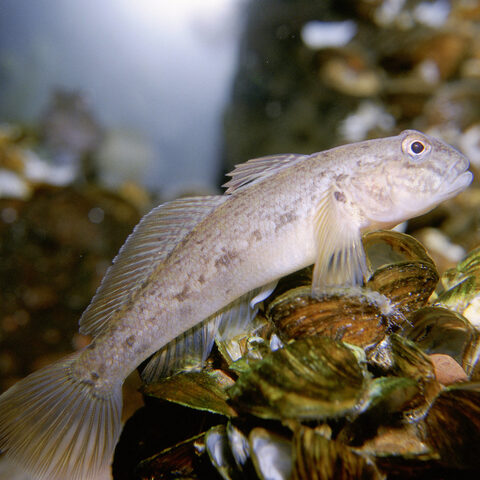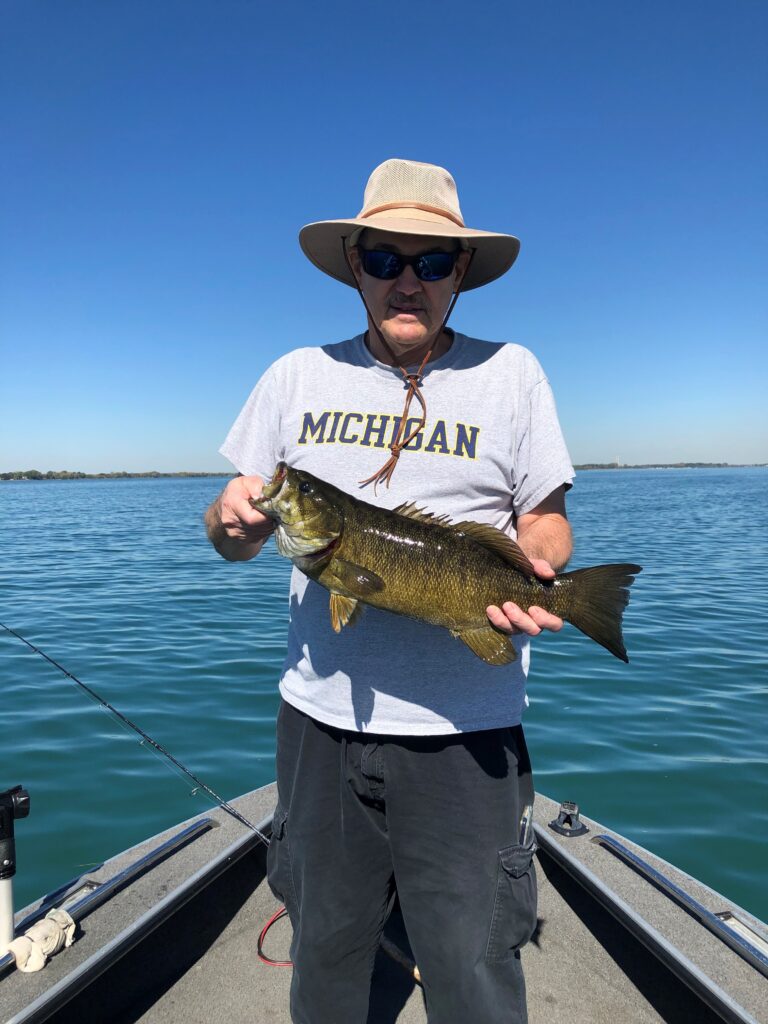Smallmouth Bass and the Round Goby

* This page contains affiliate links. The Great Lakes Fisherman may earn a commission on items purchased through these links. For more on this, please click here.
In general, invasive species are undesirable. They tend to have unexpected and often adverse effects on steady-state ecosystems. Because of the size of the recreational and commercial industries connected to the Great Lakes fishery, serious money is spent on preventing and/or controlling these invasions. But just because they are not desirable, doesn’t mean that they don’t bring some benefits. Here, we’ll discuss the impact the round goby has had on the smallmouth bass in the Great Lakes.
The round goby is believed to have been first introduced to the Great Lakes in 1990 via the dumping of ship ballast water. The fish quickly spread throughout the lakes following their introduction. By the early 2000’s, these fish blanketed the lake bottom in many areas. In a study published by the Journal of Great Lakes Research (Volume 31, Issue 1, 2005, Pages 78-86), it was estimated that in 2002, there were ~9.9 billion gobies in the western basin of Lake Erie alone. This type of proliferation is bound to have major impacts on an ecosystem.
The goby is a voracious feeder that loves mussels, small fish and worst of all for fisherman, fish eggs. Furthermore, it tends to dominate the spawning grounds of other fish species. Because of this dominance, the reproduction rates of native species often suffer.
As with any change to the steady state of a biosphere, it took some time for the established members of the Great Lakes fish population to come to terms with its newest resident. But eventually, some of them became quite fond of the goby. And for smallmouth bass, the relationship has blossomed into a thing of beauty. Well, at least for the bass.
According to another study published in 2016 by the Journal of Great Lakes Research (Volume 42, Issue 2), the goby had become the top food choice of the smallmouth bass in waters of the eastern end of Lake Erie. Furthermore, the study found that the bass had increased in size after switching over to the goby-dominated diet. Still not convinced? Just ask any bass fisherman that has fished the lakes for the last 20 years and they will tell you that the smallmouth are larger and more plentiful than ever.

It should be no surprise therefore, that in October of 2022, a new Great Lakes smallmouth bass record was set on Lake Erie. The new record of 10.15 lb shattered the previous record of 9 lb, 8 oz that was set in 1993. Once certified, this will also likely be a record for the Province of Ontario (current record: 9 lb, 13 oz). Furthermore, this fish was less than 2 lbs. shy of the current world record set in 1955 on Dale Hollow Reservoir of 11 lb-15oz.
In the grand scheme of things, this Great Lakes record fish comes early-on in the post-goby introduction era. In addition, modern technology, such as live sonar, has made identifying and targeting individual fish a
new phenomenon. What does all of this mean? It means that more than likely, this Great Lakes record will be broken again in the within next decade and that there is a real possibility of a new world record smallmouth bass coming from Lake Erie in the next couple of decades.
For those new to bass fishing and wanting to give it a try, common techniques include casting suspended jerk baits and tube baits which imitate crayfish and gobies. This is where the smallmouth will cruise in search of a meal. The presentation of jerk-baits and tubes are very similar. Twitch the bait near or along the bottom to elicit a strike from a hungry bass. Look for areas with structure, especially in areas 10-20 ft deep with a rocky or gravelly bottom. This is where the gobies like to hang out and where you are the most likely to find hungry bass.
The goby has become such a common part of the smallmouth diet, that there is now even a market for goby-style fishing lures. These are available in soft plastic varieties such as the WildEye Live Goby (includes hook) and the Ultra Realistic Design Goby Paddletail (plastic only). This is a testament to just how much of a staple the goby has become for the bass.
The studies and data all seem to indicate that there is likely a world record lurking in the depths of Lake Erie, waiting for a lucky angler to find it. Since it appears that the goby are here to stay, why not grab your favorite bass fishing rod and hit the big lakes for a chance at world record fame?
